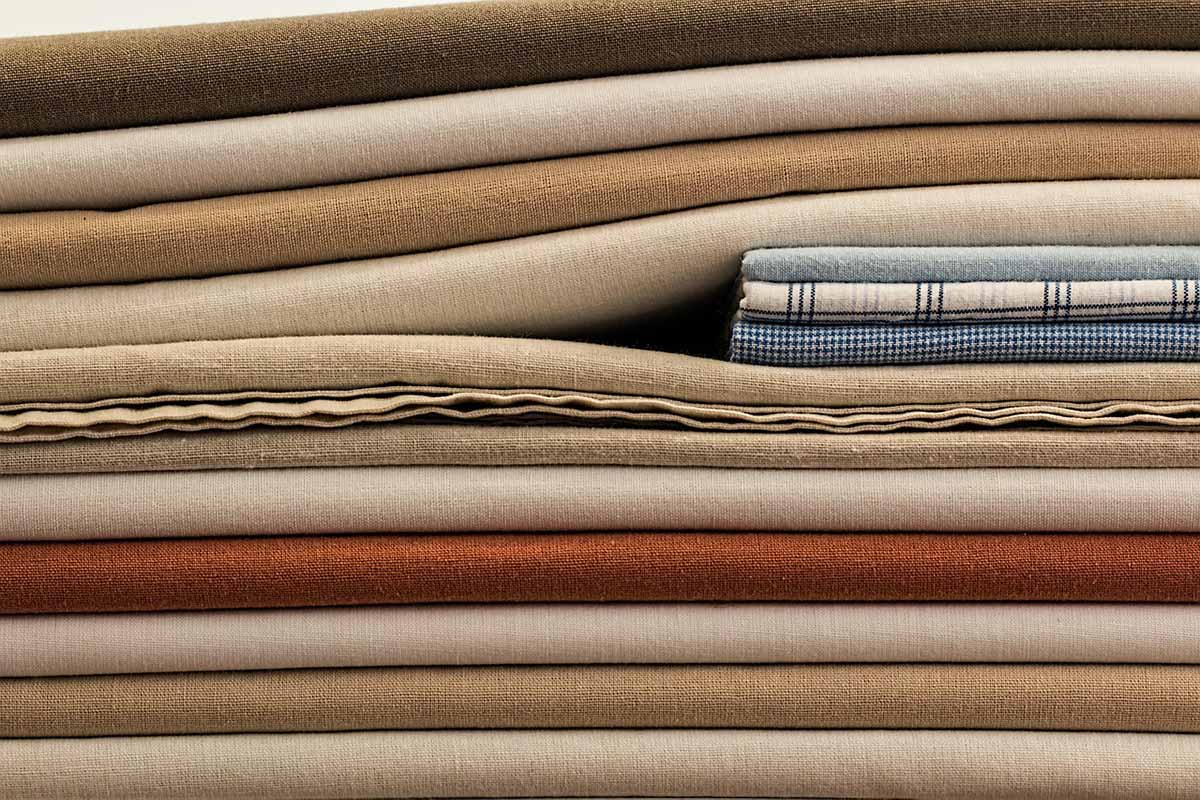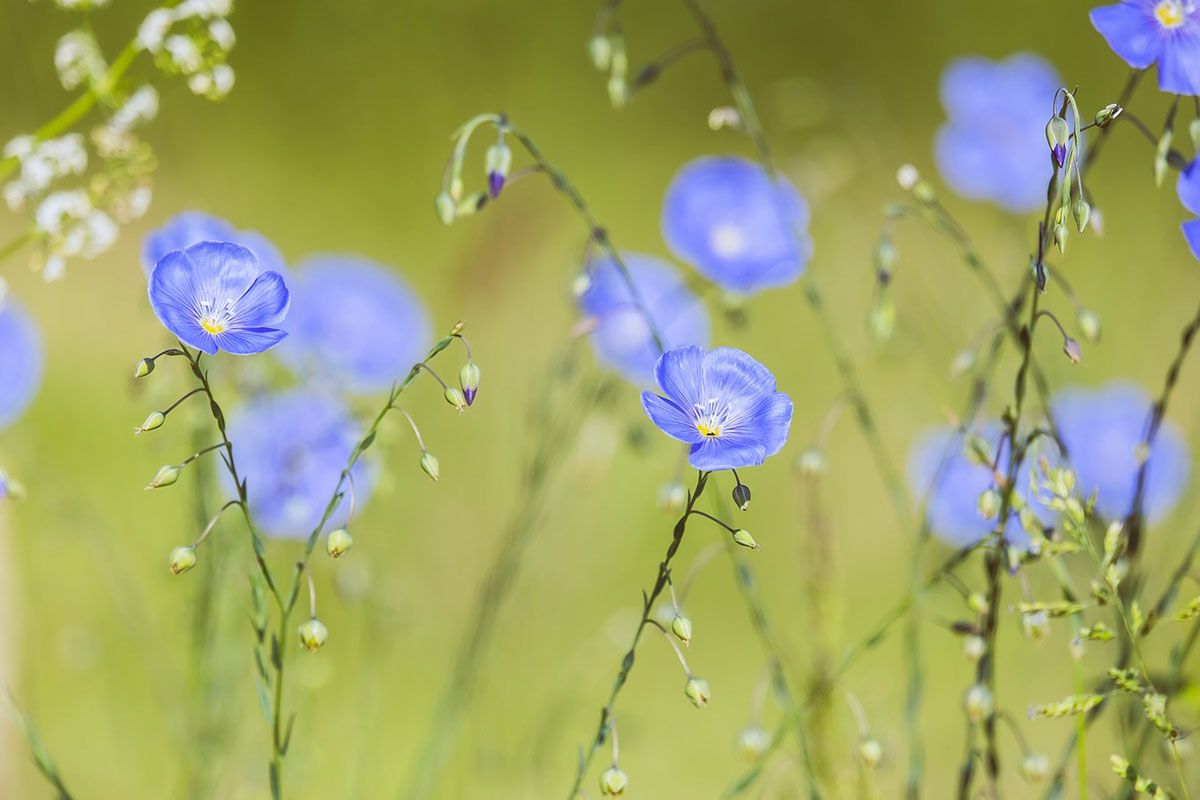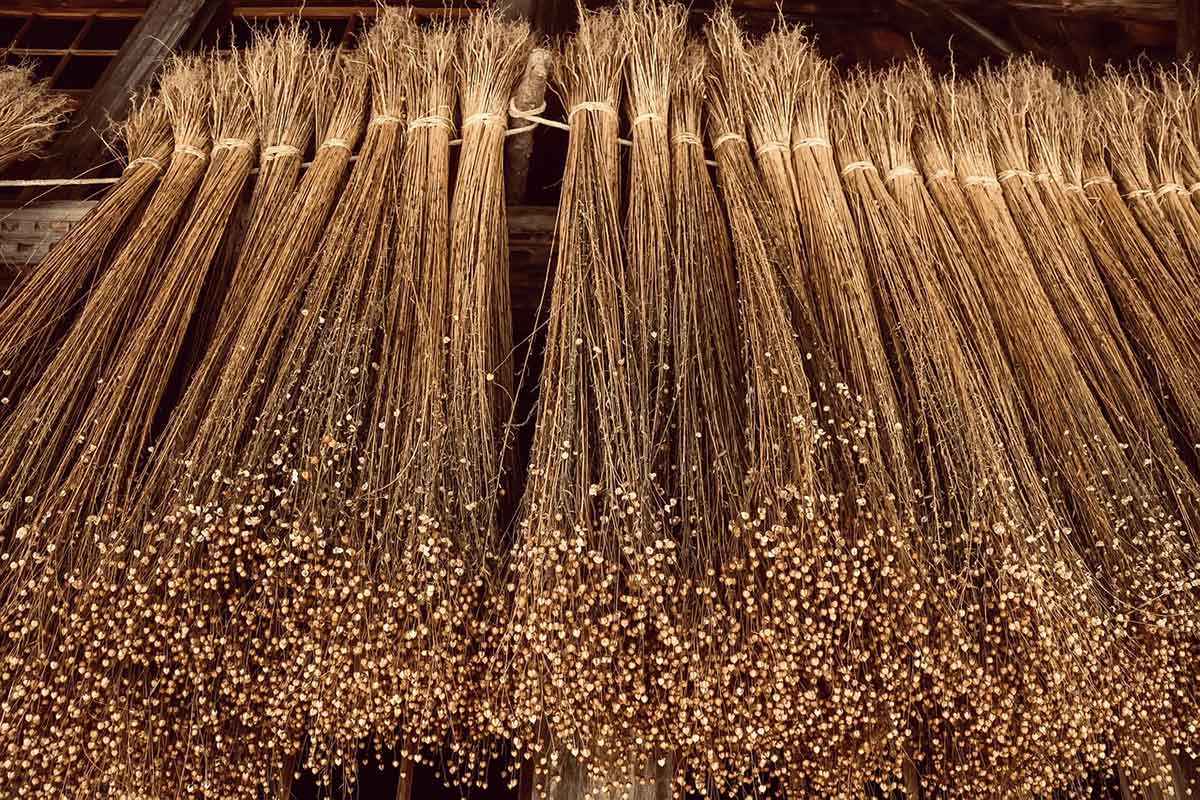What is linen ?
Flax is a natural plant material, derived from the stem of a plant measuring between 80 and 120 cm. This plant looks like grass and can also produce flowers, and is grown to produce textile fibers (textile flax) as well as oilseeds for food (edible flaxseed). These beneficial natural fibers are used in textiles, clothing, decoration and industry. In clothing, it's a highly appreciated material for its softness, strength and lightness. What's more, the material is thermoregulating, keeping warm in winter and absorbing up to 20 'humidity, very useful for summer.
Find our women's linen favorites Find our men's linen favorites

Where does linen come from?
Linen is considered the world's oldest textile. The first uses of linen date back to over 36,000 BC in Egypt and Georgia, the Egyptians named linen "woven moonlight", which says a lot about their admiration for the material. In France, linen cultivation spread long before Julius Caesar, via Charlemagne, a fervent lover of linen, who developed the craft and a know-how recognized worldwide.
Today, 2/3 of the world's flax production is located in Europe (France, Belgium, Netherlands). France is the world's leading flax producer, renowned for growing top-of-the-range flax with fine, resistant fibers. Farming areas are located close to the coast in temperate zones, in Picardie, Brittany, Normandy and Nord-Pas-de-Calais, with a total surface area of over 75,000 hectares.

What are the processing stages for flax? (from planting to garment)
In order to obtain flax fiber, several stages are necessary:
- Planting (from March to May): it's during spring that the plant will be sown, it needs about 100 to 150 days to stand up and offer its first flowers.
- Flowering (June): the flax flower appears covering the fields with a blue color, it's during flowering that the natural fibers develop, reaching maturity. The longer the stem, the stronger the fiber.
- Pulling (July): the flax is pulled then laid on the ground symmetrically, offering a sublime landscape.
- Retting (August): the plant will transform naturally on the ground through alternating rain and sun, causing the flax fibers to be extracted from the stem.
- Scutching (September): the plants are collected and then mechanically beaten to extract the flax fiber from the stems, which are then washed.
- Spinning : there are two techniques for spinning flax fibers. Wet" spinning is achieved by soaking, which facilitates the detachment of fine textile fibers for clothing and linen. Dry" spinning uses a comb to produce thicker yarns for decoration or rope.
- Weaving/knitting and garment making : linen is then transported to factories to make fabrics, garments and more.

Is linen compatible with ethical and responsible fashion?
The advantages of linen:
- Mainly European production, keeps jobs in Europe and France.
- Much lower water consumption than cotton, rainwater is sufficient, no irrigation needed.
- No need for pesticides or fertilizers because the plant is resistant.
- Flax absorbs CO2: for one hectare, the flax plant absorbs 3.7 tonnes of CO2 per year.
- The processing and manufacturing stages (retting, scutching, spinning, weaving) consume little energy and use no chemicals, thus preserving biodiversity.
- Linen is recyclable and biodegradable, an excellent choice for the environment and consumers' health.
- Clothes keep for a long time, they are resistant to wear and tear.
The disadvantages of linen:
- Flax is grown in France, unfortunately 95 e of French flax fiber production is exported to several countries, mostly China, and returns in the form of textiles. This senseless step impacts the carbon footprint of the final product, despite the ecological origin of the material.
- The dyeing stage can sometimes be unnatural and use chemicals.
The right gestures :
-It's important to check where your linen comes from if you want to buy some. To support local production in the sector, there's a "Master of Linen" label that guarantees you 100-European linen from the planting stage to the fabric, or the "European flax" label that defends GMO-free, irrigation-free and zero-waste farming.
-Buy second-hand clothes.
How to care for linen?
There are several techniques for caring for your linen clothes. Opt for a maximum wash temperature of 40°C, 600 rpm. Sort your linen by color tone before washing. Ideally, air-dry your garments, as tumble-drying may damage the linen fiber.
Find our women's linen selection
Find our men's linen selection
Find our linen home and decoration selection






J'aime les propositions qui sortent du standard
Avis du 08/02/2025, suite à une expérience du 28/01/2025 par Hélène B